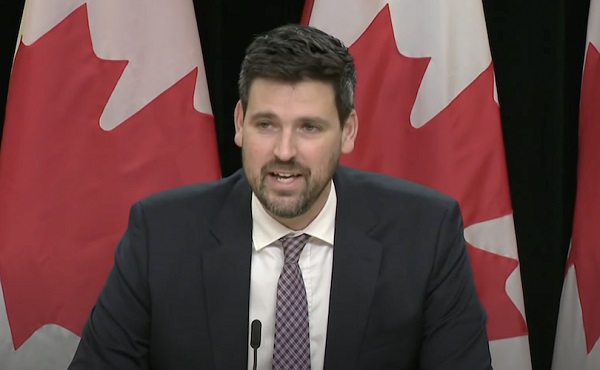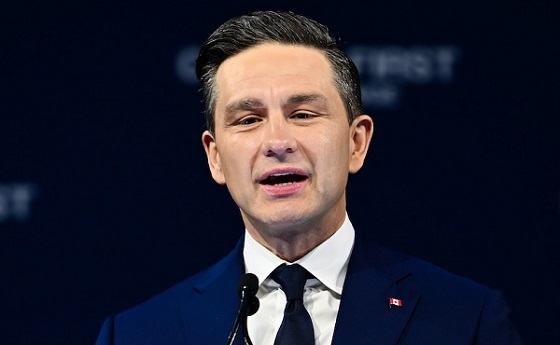Crime
Two month investigation leads to record Meth Seizure in Medicine Hat

July 17, 2019
Record Methamphetamine Seizure
in Medicine Hat
Medicine Hat… A two-month investigation by ALERT’s Medicine Hat organized crime team has resulted in what is believed to be the largest methamphetamine seizure in the city’s history. Five people were arrested, and more than $120,000 worth of drugs and cash were seized.
On July 13, 2019, with the assistance of Medicine Hat Police Service, ALERT investigators executed search warrants at two residences in Medicine Hat, arresting four people. That same day, they also stopped a vehicle along the Trans-Canada Highway near Brooks and arrested one person with the help of Brooks RCMP.
Over the course of the investigation, which started in May 2019, the following items were seized:
- 1.13 kilograms of methamphetamine;
- 156 grams of cocaine;
- 7 grams of psilocybin mushrooms;
- 207 tablets of illicit prescription drugs;
- three cans of pepper spray;
- a replica firearm; and
- $34,145 cash proceeds of crime.

This methamphetamine seizure exceeds the previous record for Medicine Hat, which the ALERT organized crime team set in December 2017 when 1.02 kilograms of meth were seized during a vehicle stop just inside city limits.
“The presence of methamphetamine has a detrimental effect not only on drug users, but also on the overall safety of citizens of Medicine Hat,” said Insp. Tim McGough, MHPS.
A total of 28 criminal charges have been laid against the five people arrested:
- Rosalind Blade, a 65-year-old woman from Medicine Hat
- Possession of a controlled substance for the purpose of trafficking (x2)
- Possession of a controlled substance (x2)
- Possession of proceeds of crime
- Breach of recognizance (x5)
- Bobby-Jo Blade, a 38-year-old woman from Medicine Hat
- Trafficking a controlled substance (x5)
- Possession of a controlled substance for the purpose of trafficking (x3)
- Possession of a controlled substance (x2)
- Possession of proceeds of crime (x2)
- Possession of a weapon dangerous to the public
- Angie Blade, a 25-year-old woman from Medicine Hat
- Breach of recognizance
- Harley Simons, a 44-year-old man from Medicine Hat
- Possession of a controlled substance for the purpose of trafficking (x3)
- Guled Shideh, a 34-year-old man from Edmonton
- Possession of proceeds of crime
Members of the public who suspect drug or gang activity in their community can call local police, or contact Crime Stoppers at 1-800-222-TIPS (8477). Crime Stoppers is always anonymous. Medicine Hat residents can also submit tips anonymously through the Medicine Hat Police Service mobile app, which is free to download and available for both Apple and Android devices.
ALERT was established and is funded by the Alberta Government and is a compilation of the province’s most sophisticated law enforcement resources committed to tackling serious and organized crime. Members of Calgary Police Service, Edmonton Police Service, Lethbridge Police Service, Medicine Hat Police Service, and RCMP work in ALERT.
Courageous Discourse
No Exit Wound – EITHER there was a very public “miracle” OR Charlie Kirk’s murder is not as it appears

By John Leake
Turning Point Spokesman: “No Exit Wound a Miracle”
Charlie Kirk Show producer Andrew Kolvet repeats extremely dubious claim purportedly made by “the surgeon who operated on Kirk.”
Monday Blaze Media (relatable with Allie Beth Stuckey) reported the following:
Turning Point USA spokesman and executive producer of the “Charlie Kirk Show” Andrew Kolvet revealed new details about the shooting that even doctors are calling a miracle. According to Kolvet, the surgeon who operated on Kirk claimed that the high-velocity bullet was powerful enough to kill multiple large animals — and “should have gone through” his body. But for some reason, Kirk’s body was able to stop it.
“I want to address some of the discussion about the lack of an exit wound with Charlie,” Kolvet wrote in a post on X.
“The fact that there wasn’t an exit wound is probably another miracle, and I want people to know,” Kolvet continued, explaining that he had spoken with the surgeon who worked on Charlie in the hospital.
“He said the bullet ‘absolutely should have gone through, which is very very normal for a high powered, high velocity round. I’ve seen wounds from this caliber many times and they always just go through everything. This would have taken a moose or two down, an elk, etc,’” he recalled.
“But it didn’t go through. Charlie’s body stopped it,” he added.
When he mentioned to the doctor that there were “dozens of staff, students, and special guests standing directly behind Charlie” when he was shot, the doctor reportedly replied, “It was an absolute miracle that someone else didn’t get killed.”
“His bone was so healthy and the density was so so impressive that he’s like the man of steel,” Kolvet recalls the doctor saying.
This is not a credible statement, and it raises a number of concerns.
It strikes me as very perplexing that a “surgeon operated on Kirk,” because in the video of the shooting, Charlie reacted with a decorticate posture—that is, an abnormal body posture characterized by flexion of the upper limbs—caused by severe trauma to the central nervous system. This indicates that the bullet either directly struck his cervical spinal cord, or the shock wave of the supersonic bullet passing near his spinal cord traumatized it.
A 150-grain, .30-06 bullet’s energy at 150 yards from the muzzle varies by ammunition, but a common hunting cartridge has an estimated value of approximately 1,800-2,000 foot-pounds (with the bullet traveling at about 2500 feet per second). In other words, the .30 caliber (.30 inch diameter) metal projectile struck his neck with sufficient kinetic energy to move a 2,000 pound mass a linear distance of one foot.
If the bullet that struck Charlie’s cervical spinal cord was a .30-06 fired from 150 yards away, it would have:
1). Severed his spinal cord, killing him instantly.
2). Passed through his neck.
Note that the cervical vertebrae are supported by strong muscles and have high compressive strength, but are far too delicate to stop a .30-06 bullet traveling at 2,500 feet per second.
If ALL of the kinetic energy of the bullet was absorbed by Charlie’s neck, it would have done spectacular trauma to his neck, as distinct from producing the clean bullet hole visible in the video footage that ruptured his Carotid artery.
Though I appreciate that some may find a supernatural explanation to be consoling, it seems to me that the investigation should not rest on the this explanation.
As I wrote a few weeks ago: If I were investigating the murder, I would consider the hypothesis that Charlie was shot with a weapon equipped with a suppressor and loaded with a subsonic cartridge to further reduce the sound. I have seen footage of someone firing a rifle with this setup, and the shot was amazingly quiet. The effective range of such a weapon is about 100 yards or less, and the shooter must be very skilled.
However, such a setup could fire a subsonic projectile that would penetrate a human neck without passing through it. In this scenario, the actual assassin (firing the suppressed rifle) hypothetically coordinated the timing of his shot with someone else firing a normal (supersonic and loud) rifle cartridge into the air at the same time to create a distraction or red herring.
In a functioning society in which the people trust their authorities—including their medical examiners—it would be easy to discover what happened and to disclose at least a preliminary report that would satisfy most reasonable people. The trouble our Republic is facing now is that so many of us no longer trust our federal and state authorities to tell us the truth.
For example, we have strong grounds for suspecting that medical examiners are not diligently investigating (with the proper analytic methods) unexpected, fatal cardiac arrests in young people to determine if they were caused by vaccine-induced myocarditis.
Subscribe to FOCAL POINTS (Courageous Discourse).
For the full experience, upgrade your subscription.
Business
Quebecers want feds to focus on illegal gun smuggling not gun confiscation

The Canadian Taxpayers Federation released new Leger polling showing that half of Quebecers say the most effective way to reduce gun crime is to crack down on illegal gun smuggling from the United States, not a federal gun ban and confiscation.
“Law enforcement experts say the best way to make Canada safer is to stop illegal gun smuggling and Quebecers say exactly the same thing,” said Nicolas Gagnon, CTF Quebec Director. “It makes no sense to pour hundreds of millions into a confiscation that only takes guns from lawfully licensed gun owners.”
In 2020, the federal government launched its policy to confiscate thousands of so-called “assault-style” firearms from licensed gun owners. Ottawa recently announced a pilot project in Cape Breton to start taking firearms from individual owners.
The Leger poll asked Quebecers what they think is the most effective way to reduce gun crime. Results of the poll show:
- 51 per cent say introducing tougher measures to stop the illegal smuggling of guns into Canada from the United States
- 37 per cent say banning the sale and ownership of many different makes and models of guns along with a government buyback program
- Six per cent say neither of these options
- Seven per cent do not know
The results of the polls arrived as recorded remarks from Public Safety Minister Gary Anandasangaree made headlines in September.
In a leaked audio recording, the minister suggested the confiscation program is being pushed in part because of voters in Quebec, while also expressing doubt that local police services have the resources to enforce it.
Police organizations have long warned Ottawa’s confiscation program is misguided. The RCMP union says it “diverts extremely important personnel, resources, and funding away from addressing the more immediate and growing threat of criminal use of illegal firearms.”
The program was first estimated to cost $200 million. Just providing compensation for the banned guns, not including administrative costs, could cost up to $756 million, according to the Parliamentary Budget Officer.
Premiers of Alberta and Saskatchewan have both publicly said that they would not cooperate with Ottawa’s gun ban. Premier François Legault has stayed silent on this issue.
“Quebecers have been clear: the real problem is illegal gun smuggling, not law-abiding firearms owners,” said Gagnon. “The police have also made it clear the gun confiscation will waste money that could be used to stop criminals from committing gun crimes.
“Legault needs to stand up for Quebec taxpayers and refuse to help implement Ottawa’s costly and ineffective confiscation scheme. The federal government needs to drop this plan and focus its resources on intercepting illegal guns at the border: that’s how you actually make communities safer.”
-

 Agriculture4 hours ago
Agriculture4 hours agoFrom Underdog to Top Broodmare
-

 Health4 hours ago
Health4 hours agoSovereignty at Stake: Why Parliament Must Review Treaties Before They’re Signed
-

 Health13 hours ago
Health13 hours agoCanada surrenders control of future health crises to WHO with ‘pandemic agreement’: report
-

 Digital ID1 day ago
Digital ID1 day agoThousands protest UK government’s plans to introduce mandatory digital IDs
-

 Digital ID2 days ago
Digital ID2 days agoToronto airport requests approval of ‘digital IDs’ for domestic airport travel
-

 Censorship Industrial Complex13 hours ago
Censorship Industrial Complex13 hours agoCanada’s justice minister confirms ‘hate crimes’ bill applies to online content
-

 Brownstone Institute2 days ago
Brownstone Institute2 days agoThe Doctor Will Kill You Now
-

 Business3 hours ago
Business3 hours ago$15B and No Guarantees? Stellantis Deal explained by former Conservative Shadow Minister of Innovation, Science and Technology












